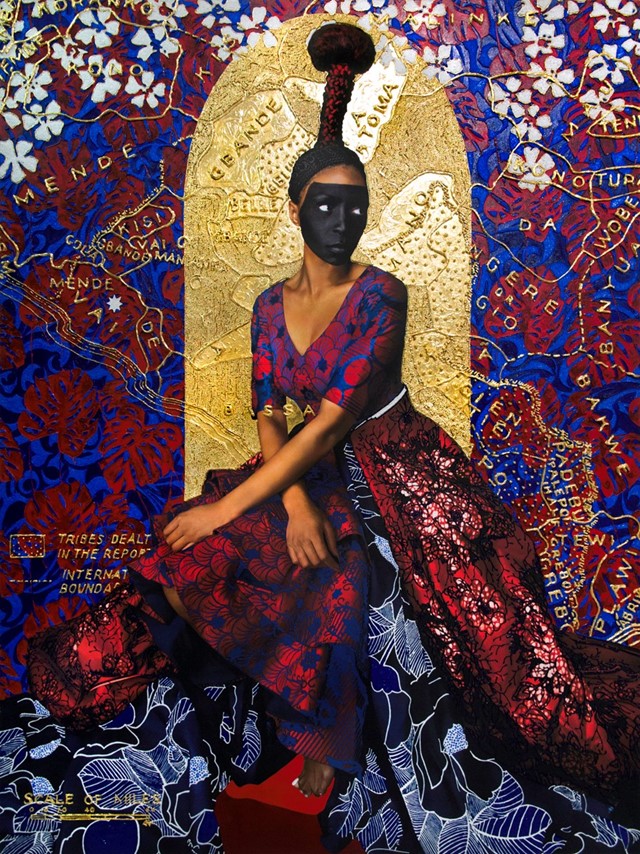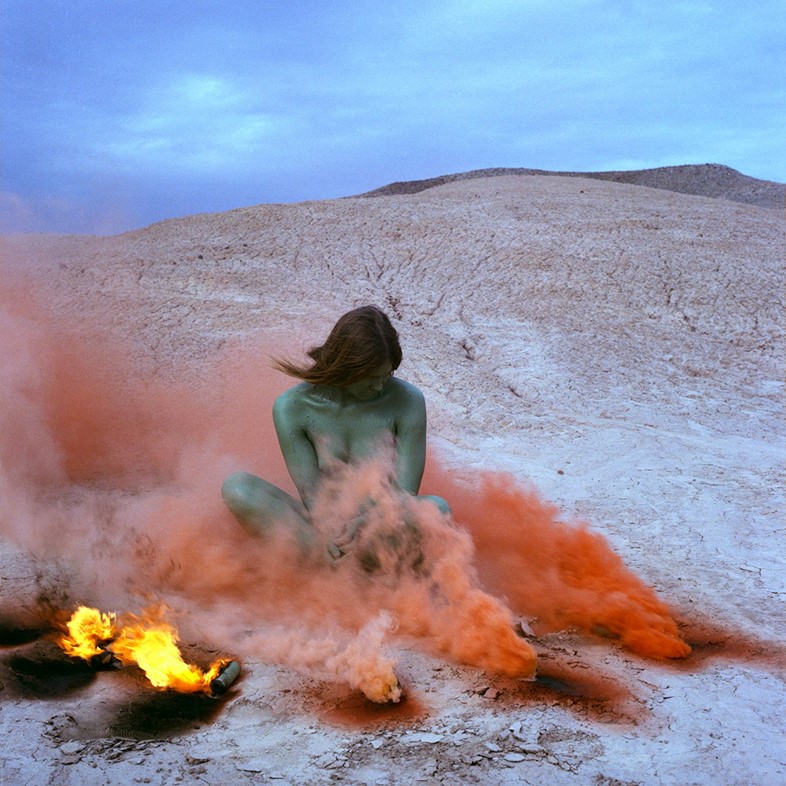From abstract painting to performance art, these women explore ideas of ritual, witchcraft, and mysticism
Historically, women’s relationships with the paranormal have proved harmful to them; whether outcasting them from society or burning them at the stake. Men, however, have been celebrated for their exploration of it.
As spirituality became intertwined with abstract art in the 20th century, Piet Mondrian, Wassily Kandinsky, and Kazimir Malevich emerged as pioneers of the movement. While Kandinsky is credited as the founder of abstract art, Swedish artist Hilma af Klint was, in fact, making similar work at the same time.
Earlier this year, af Klint posthumously took home her own slice of history, breaking the attendance record for her retrospective exhibition Hilma af Klint: Paintings for the Future at the Guggenheim Museum in New York City. The exhibition showcased the spiritual works that she kept hidden for 20 years after her death, having signed a two-decade-long embargo forbidding them being displayed.
“The pictures were painted directly through me, without any preliminary drawings, and with great force” – Hilma af Klint
During her lifetime (1862–1944), af Klint alleged to have communicated with spirits through séances and claimed that she was sometimes controlled by spirits – “The pictures were painted directly through me, without any preliminary drawings and with great force” – but also in collaboration with them – “It was not the case that I was to blindly obey the High Lords of the Mysteries but that I was to imagine that they were always standing by my side”. Spirituality has continued as a common thread since, and artists such as Marina Abramović, Juliana Huxtable, and Sara Knowland have also used it as a way to engage their energy and work.
From the 20th century to modern-day, spirituality runs through many different mediums of art, including painting, drawing, and performance. Below, we chart eight female artists who have used it to explore their identity, reject patriarchal norms, and imagine alternative worlds.
HILMA AF KLINT
As one of the first female artists to receive a degree from the Royal Academy of Fine Arts in Stockholm, Hilma af Klint is a pioneer in the world of abstract art. Her work incorporates geometrical shapes and spiritual symbols, with one of her most well-known works being “Altarbird” (1915). Many of her other works, such as “Group IV, No 7. The Ten Largest, Adulthood” (1907), include the letters ‘U’ and ‘W’, where the former stands for the spiritual world and the latter represents physical matter. After gaining a scholarship from the university after graduating, af Klint advanced from drawing portraits to painting the abstract and spiritual works she is known for today.
The Swedish painter was known for her spiritual affiliation in her work and life. Since she was a teenager, af Klint had participated in séances – a meeting which attempts to contact spirits. This practice carried on into her later life, as she formed the ‘Friday Group’ of five women – un-inventively named ‘The Five’ – and this group would conduct séances to connect with spiritual beings that they named ‘The High Ones’. af Klint’s spiritual beliefs inspired many of her famous works, including the 193-piece collection “Paintings for the Temple” (1906-1915). Using letters, words, and symbols, the artist conveyed ideas about parallel worlds and spiritual dimensions. As some of the first pieces of abstract art to be discovered in the western world, af Klint's spiritual paintings have made a lasting contribution to the movement.
LEONORA CARRINGTON
This British-Mexican painter is one of the most celebrated women artists from the surrealist movement. This movement explored the potential of the subconscious mind, dream states, and fanatical experience. Although the term ‘surrealism’ was coined by male French artist André Breton, there have been many female artists – including Dorothea Tanning, Claude Cahun, and Dora Maar – who added vibrant and expressive works to the movement.
Carrington’s work “Down Below” (1940) shows a mystical and dark landscape filled with animal-like creatures, depicting the artist’s idea of the ‘underworld’. Carrington once said: “you may not believe in magic but something very strange is happening this very moment”. Magical and celestial imagery is present in most of her works and her recognisable half-animal, half-human creatures link the real world to the fantastical. Many of the women she painted were also inspired by females in her own life, including her relationship with fellow surrealist artist Remedios Varo. Creating strong, mythical characters within mystical landscapes, Carrington painted works that were magical and symbolic, becoming an icon within the surrealist movement.
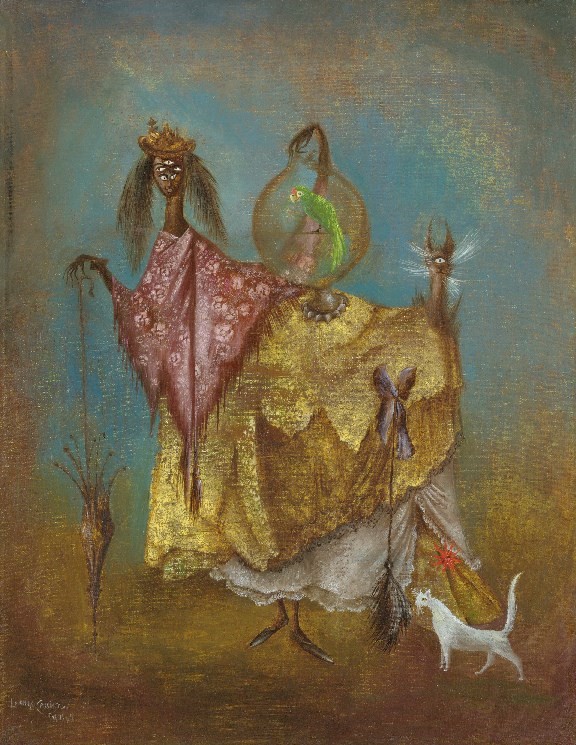
MARINA ABRAMOVIĆ
Marina Abramović’s work “Spirit Cooking with Marina Abramović” (1997) – where the artist used breast milk, urine, menstrual blood, and sperm to create a ‘painting’ – recently caused right-wing Catholics to protest outside her exhibition Marina Abramović: Do Czysta/The Cleaner at the Centre of Contemporary Art Znaki Czasu in Poland. In their eyes, the work was a Satanist practice, despite the Serbian artist denying any affiliation with the devil.
Abramović is known for her performative work that explores ideas of spiritualism, ritual, and sacrifice. She previously told Dazed that she is influenced by “Spiritualism on one side, French culture on another, and Russian on the third side.” Her upbringing in Yugoslavia, where her grandmother would take her to the Serbian Orthodox church, also exposed her to religious rituals. Ritual is a recurring theme in Abramović’s work, sacrificing her body to the audience in “Rhythm 0” (1974) – a performance that allowed the audience to do anything they wanted to the artist without resistance – where one person was close to shooting Abramović before other audience members intervened. Other artists have also used blood to create radical work, such as Gina Pane who used the body in a sacrificial way by cutting her own skin for the performative piece “Azione Sentimentale (Sentimental Action)” (1974).
Abramović's work shows she isn’t afraid to do things outside of the ordinary. She recently created a digital sculpture, where audiences can watch her floating around the installation through augmented experience goggles, allowing her to immortalise her spirit in the digital world. The artist has also announced that she will electrify herself with one million volts in order to put out a candle just by pointing at it – as if like magic. Booked for 2020, this performance will be the first time a woman has taken over the main gallery spaces at the Royal Academy of Arts in London.
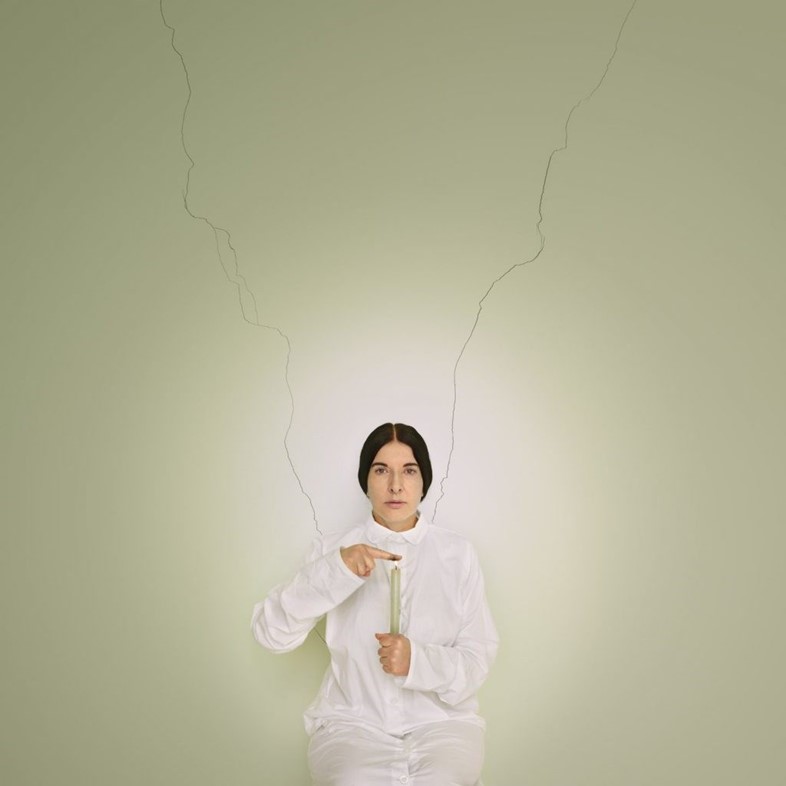
JULIANA HUXTABLE
Juliana Huxtable is an artist with a background in human rights and gender studies. These interests seep into her work, which explores notions of identity, queerness, and sexuality. Working across many mediums, including print, performance, music, and social media, Huxtable engages with socio-political issues through her mythical prose and visual imagery.
“Beyond this veil is a mythical land where black mountains covered in panther fur split tributaries of the river...” This quote might not make too much sense until you read the rest of the prose poem written in Juliana Huxtable’s work “Untitled (Casual Power)” (2015). This poem will transport you into her ‘mythical land’ where ‘black unicorns run freely’ and there is ‘free breakfast for the children’. This imagined utopia references icons like Left Eye and Octavia Butler, merging pop-culture with mythical imagery to portray ideas around black culture and history.
Another one of her works “Untitled in the Rage (Nibiru Cataclysm)” (2015) shows a green-figure sitting in an overly sexualised pose in front of a full moon. Although from first glance this appears to be an unknown and rather mystical location, Huxtable is referencing Egyptian and Nubian landscapes and cultures. Through her work, this multi-talented artist explores ideas that are important to her own identity, engaging audiences into her mythical landscapes at the same time.
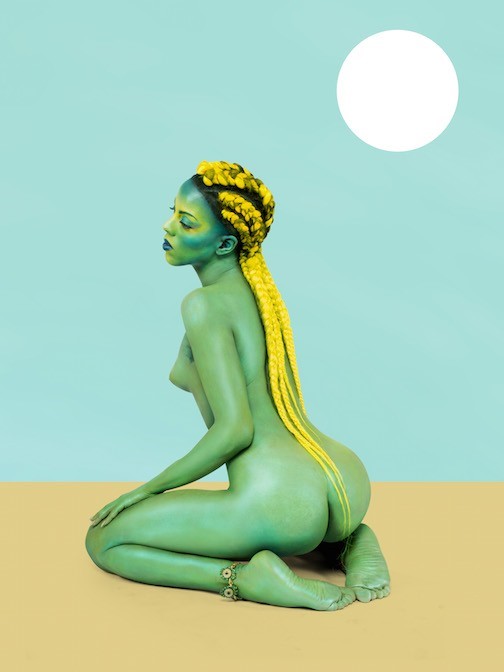
SARA KNOWLAND
When you think of a witch you might imagine a green-faced, crooked-nosed figure wearing a black pointed hat and holding a broom. Sara Knowland’s paintings are not far off this image. Playing with the idea of the Wicked Witch of the West, Knowland characterises her witches with raw emotion and vibrant expressions. This gives life to the witches, who have often been vilified as evil characters that must be hunted or burnt throughout literature, films, and fairytales.
Recently shown at east London gallery Soft Opening, Knowland displayed three paintings of her witches in an exhibition titled Mostly Women. This title pokes fun at Willem de Kooning’s exhibition at the Gagosian Gallery in New York in 2000 – also named Mostly Women. However, the Royal Academy graduate is not suggesting that most women are witches; she is facing up to the stereotypes around this villainous cartoon and their ‘female-ness’. Witches have often been portrayed as female, yet they don’t fulfil ‘feminine’ behavioural and aesthetic expectations. Not conforming to binary ideals, Knowland is opposing the misogynistic representation of witches to suggest that they should be celebrated as dynamic characters outside of gender structures.
DOROTHEA TANNING
American artist Dorothea Tanning became best known for her fantastical works which subverted surrealism and created dream-like landscapes. Although much of her early work was influenced by surrealism, she disagrees with people who talk about the movement in the same way as abstract expressionism or impressionism. Instead, Tanning claimed: “Surrealism is a philosophical movement.” Exploring ideas around fantasy, prophecy, and memory across her paintings, sculptures, costume designs, and writing, Tanning questioned our everyday reality to express her interests in the unknown.
This is evident within her paintings in particular, where Tanning created scenes that appear to be from alternative universes. The figures within her work often stand among mythical-looking creatures, such as in “Birthday” (1942), where a monkey-like animal with wings stares out of the painting with beady eyes. Her work also placed the ordinary next to the extraordinary. In “Eine Kleine Nachtmusik” (1943), two young girls stand on a normal-looking red-carpeted corridor, while one of the figures with gravity-defying hair faces towards an abnormally oversized sunflower.
Tanning’s interest in transformation also took her paintings from the real world to the spiritual. You have to look closely at the work “Insomnias” (1957) to make out figurative shapes among the abstract colours and lines. Tanning pointed out, that as her style was evolving, she “wanted to lead the eye into space that hid, revealed, transformed all at once”. However, it was this intrigue in the mystical and the artist’s open-mindedness towards the unknown that allowed her to create such an eclectic collection of work over seven decades.
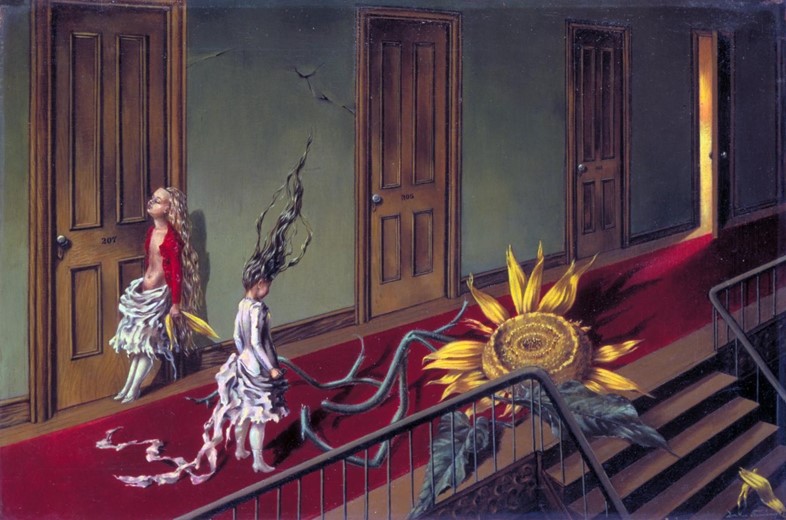
JUDY CHICAGO
Judy Chicago’s work has often been called boundary-shifting, controversial, and provocative. Through her installations, the feminist artist aims to liberate herself from minimalism and the patriarchy, claiming “we need a God figure beyond gender so that both men and women can see themselves in the Godhead”. Chicago went on to explain her relationship with religion: “My particular belief system sees the miracle of life as God, thus revealing the beauty of the ‘atmosphere’ is a way of manifesting the sacred.”
The artist’s series Atmospheres sets this image of the sacred aflame. In “Immolation” (1972) and “Goddess with Flares” (1972), figures are surrounded by coloured fog and fire, creating eerie scenes that hint at ideas of sacrifice and ritual. Other works placed female figures among nature, portraying them as goddesses through their powerful stances within the rocky landscapes.
Chicago’s work also lives in its own space and time. The artist previously told Dazed: “It is not unusual for it to take decades for people to understand my work.” Although Chicago has been working for over half a century, she has created a timeless body of work and her images continue to exist in their own mystical universe.

LINA IRIS VIKTOR
Through her black and god paintings, Lina Iris Viktor touches on ideas of the mythical, the spiritual, and the alchemical. The New York-based artist also laces her work with commentary on black history and her own exploration of the complexities of race and gender.
Last year, Viktor exhibited her work at a solo show titled Lina Iris Viktor: A Haven. A Hell. A Dream Deferred at the New Orleans Museum of Modern Art. This exhibition referenced the colonial history of Liberia – the African country where her parents were born. Many paintings within the show also had mythological references, hinted at by the exhibition’s title, which connotes ideas of religious belief and spirituality.
Although Viktor’s distinct style was claimed to have been copied for Kendrick Lamar’s music video, the artist said she used her recognisable gold colour palette because it is “ennobling” and told Dazed that “the spiritual value of gold far outweighs that of the monetary value”. With reference to rituals in ancient Egypt, Mali, and Ghana, where they would bury the dead with gold, the artist said: “When you do this you understand the spiritual quotient of gold as this conduit between other worlds and us.” Viktor played with this idea in her work, using the “immortal metal” as a powerful symbol to connect with other spiritual planes through her paintings.
